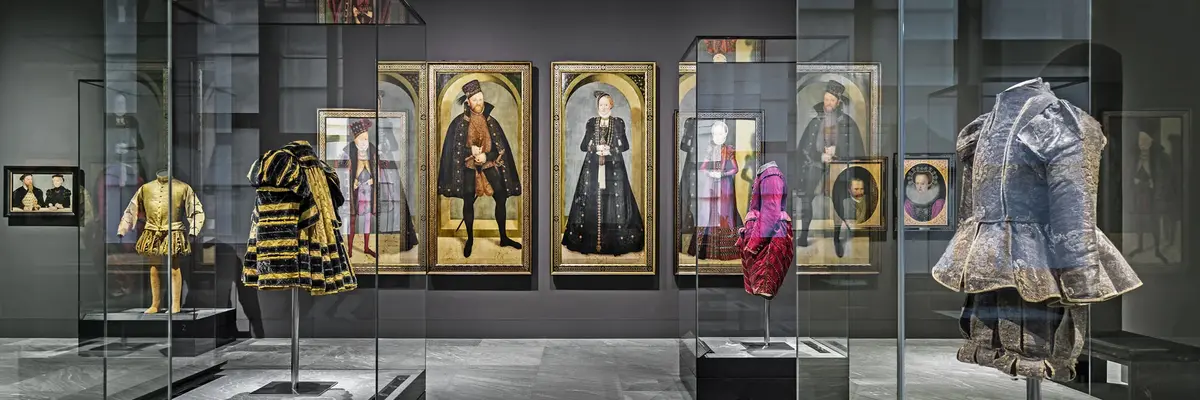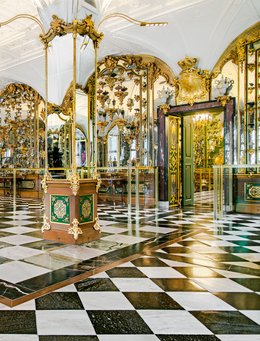Module Text with Image
A total of twenty-seven rulers’ costumes are presented in the four exhibition halls, where they unfurl their sensual splendour, from their different materials to embroidery, decoration, lace and trimmings of gold, silver and silk. For seventy-five years, the clothing was no longer on show as a whole. In the twenty years leading up to the reopening, more than forty textile and metal conservators, scientists, museologists, photographers, costume designers and other specialists made sure that the haute couture of 1550–1650 would appear in renewed magnificence. In order to protect the sensitive fabrics from too much light, the costumes will be shown in rotation. Six complete ensembles, eleven suits with doublet and trousers, six robes and four ladies’ gowns: In the international museum landscape there is hardly anything comparable from this time period.










